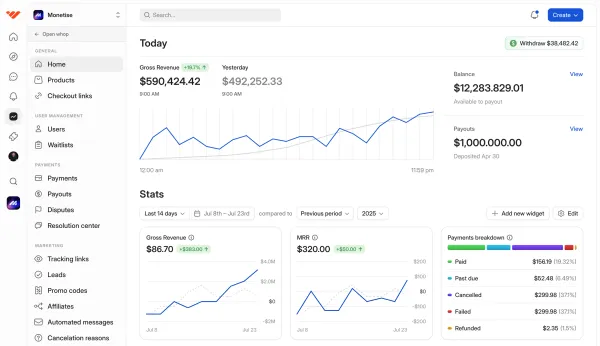Stan Store and Shopify are both popular options for selling products online, but which is more suited to your business? Read this comparison review to find out.
Key takeaways
- Stan Store targets social media influencers with a link-in-bio design for promoting products.
- Shopify serves businesses wanting traditional online stores with extensive product catalogs.
- Stan Store recommends listing only 3-4 products maximum to avoid overwhelming followers.
- Shopify offers 24/7 chat support while Stan Store lacks guaranteed response times.
- Stan Store costs $29-99 monthly while Shopify ranges from $39-399 monthly.
Both Stan Store and Shopify make ecommerce something that's accessible to less-technical individuals. The two platforms handle displaying products, processing payments, and keeping track of customer data. However, they cater to rather different audiences.
Stan Store uses a 'link in bio' design, aimed squarely at influencers and others with a large social media presence. Meanwhile, Shopify is aimed at those looking to run a more traditional online store.
In this breakdown, we'll look at the features, benefits and downsides of each platform so you can decide for yourself which is best.
Stan Store vs Shopify
Stan Store is aimed at influences and creators who want to promote a few products via their social media profiles. Rather than going to the trouble of creating a fully-fledged online store with a large number of products and multiple pages, Stan Store focuses on offering a frictionless experience for social media followers. They can click a link on your TikTok or Instagram profile and be directed to a mobile-friendly page where they can see the products they're interested in.
Shopify takes a different approach to selling online. The platform's target audience is people who want to sell physical products and in particular, those who have an extensive catalog of items to sell. Shopify is a dedicated ecommerce platform that can be used to create online stores that look appealing on both desktop and mobile devices.
Let's explore each platform in more detail:
What is Stan Store?
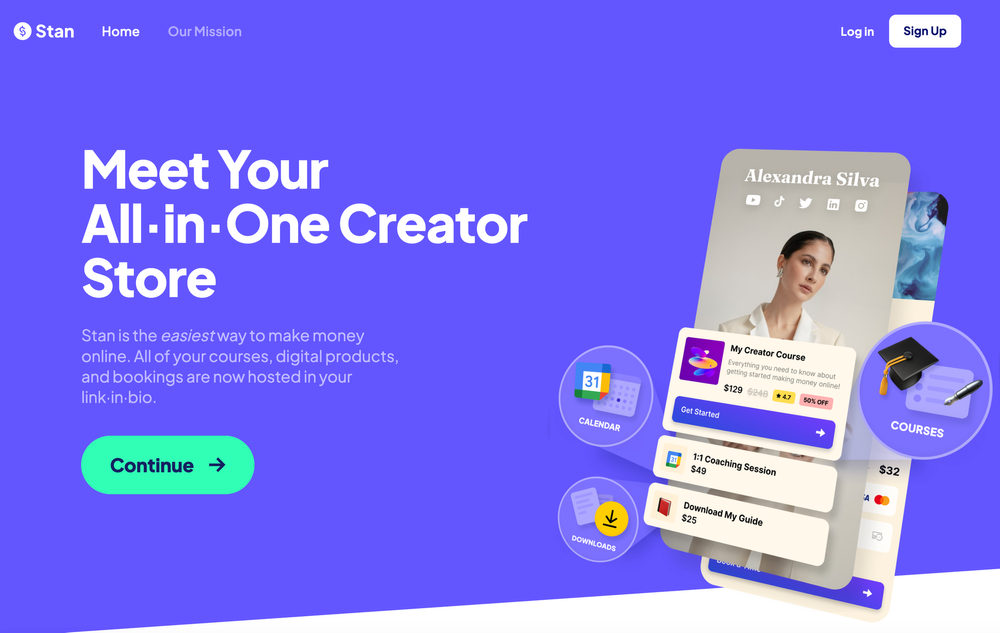
Stan Store is a creator-focused ecommerce solution for people whose primary source of sales is their social media following. Rather than building a dedicated website and driving traffic to that site through search engine optimization (SEO), creators can focus on their social media followers, and promote products through a link on their profile page.
Stan Store takes the traditional 'link in bio' a step further, by allowing creators to have a fully functional store (albeit with a small number of products) as the page they link to.
Who can use Stan Store?
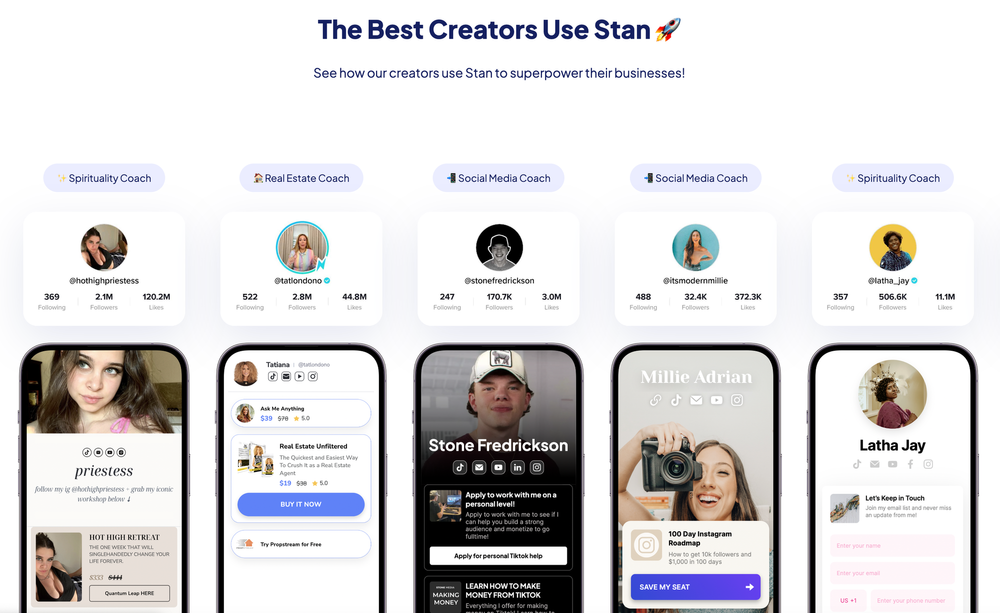
While anyone can use Stan Store as their main web presence (for example, adding a link to the store on a business card), the platform's main audience is people who rely on social media for the bulk of their marketing.
This includes those who want to sell digital products, book coaching calls, or otherwise monetize their audience. It's a premium service, so it's best suited to those who have a dedicated audience and who're confident they'll be able to make regular sales.
How does Stan Store work?
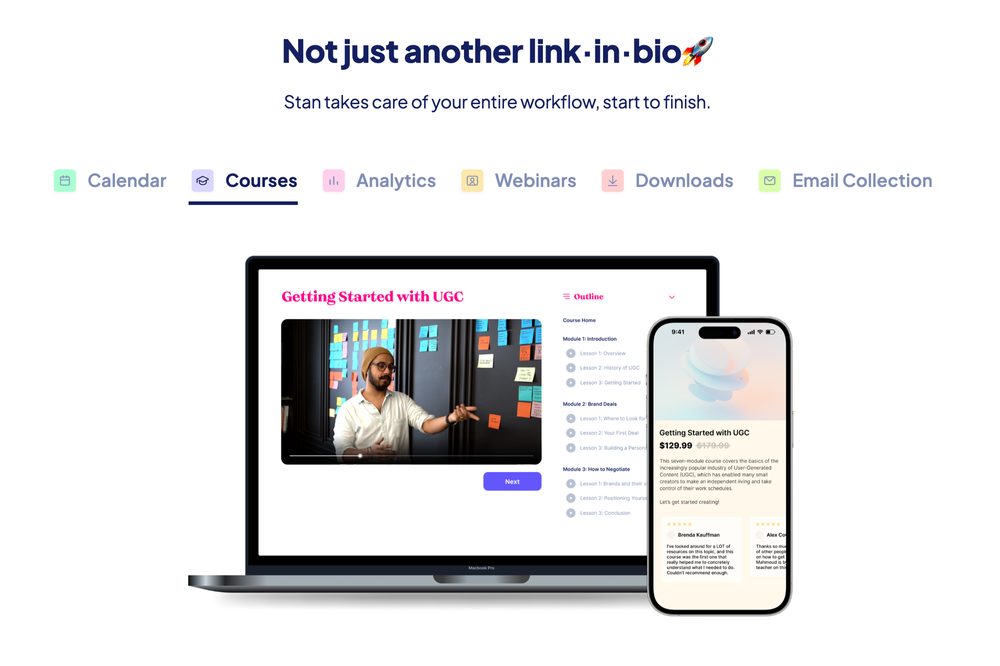
Stan Store is an easy-to-use platform with a drag-and-drop store builder that helps creators sell products, gain mailing list signups, and book meetings. When a social media follower clicks on a bio link from their chosen platform, they'll be taken to a store page that looks like it's a part of that platform. By offering a seamless-feeling experience, Stan Store helps creators get a better conversion rate.
Selling with Stan Store
Stan Store's onboarding process is incredibly smooth. When you sign up for a free trial you'll be asked to provide a username, which will be used as part of your store URL. It is possible to change your username, so you don't have to worry too much, but try to think of something that represents your brand and is easy to remember.
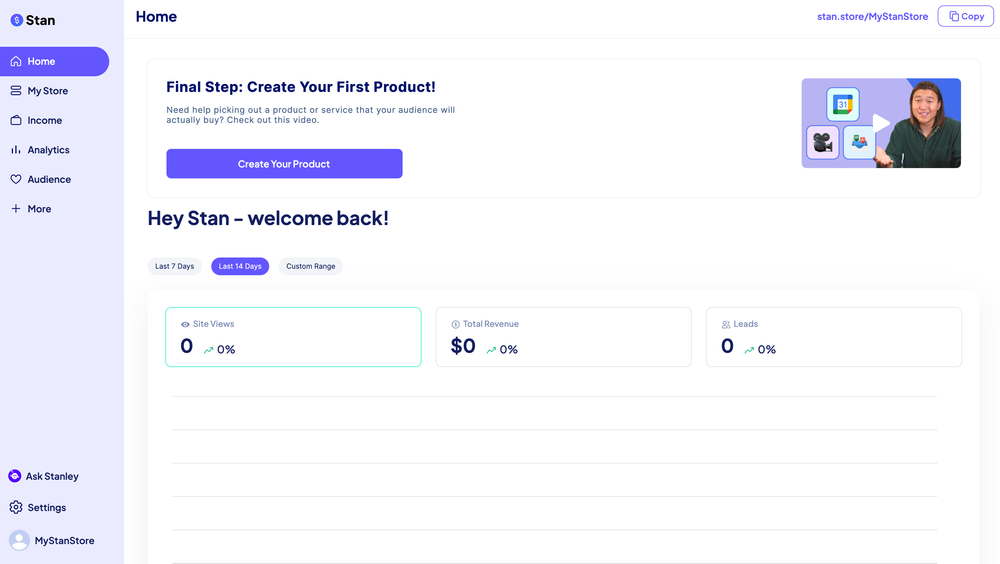
After creating your account, you'll be directed to the Stan Store dashboard and asked to upload a profile picture, link your social media accounts and set up your payment options. The platform supports Stripe and PayPal.
Once your account is fully set up, you can start adding products:
- On the Dashboard select My Store
- Click Add Product
- Choose the product type (e.g. Coaching Call, Digital Product, or URL)
- Enter the title and subtitle of the product. Optionally, add an image and button text.
- Fill out a description of the product
- Choose the price
- Choose what information you'd like buyers to provide (e.g. email address/other contact details)
- Upload the product, or provide the link
- Once you're happy with everything you've entered, click Publish
Congratulations, your product is now live!
Stan Store recommends creators list 3-4 products, maximum on their store. Adding too many products can reduce sales by making your followers feel overwhelmed by the number of products they have to choose from.
Remember, your 'link in bio' page isn't a fully-featured store, but rather a simple landing page that aims to convert a visitor who is already interested in a specific product.
Platform customization
The customization options available on Stan Store depend on the tier of account you have. You can change the colors and the theme of the store, within a few set parameters, and there are some options to decide how each product looks on the page.
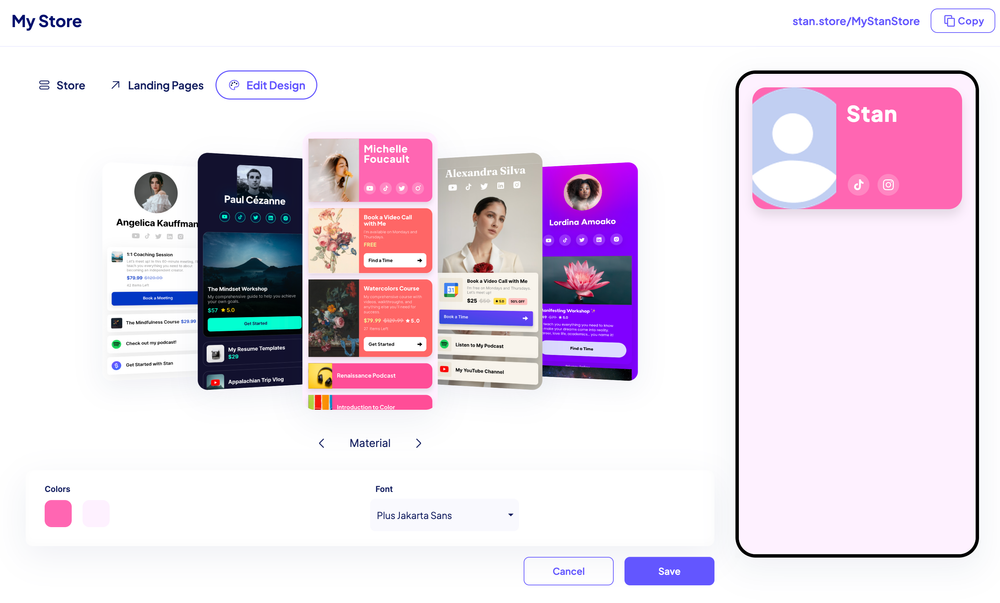
Overall, though, customization options are limited. The idea behind the platform is that your page should look like it's a part of the social media platform the visitor came from. Because of this, all the layouts look quite similar. You can change the fonts, colors and background images, but it's still clear that the underlying page is a Stan Store one.
Engagement tools and customer management
Members on the lower tiers can see some basic statistics such as the number of store visitors and the amount of revenue earned. Those on the Creator Pro Plan can add tracking pixels for Facebook, TikTok, Pinterest, and Google Analytics, enabling them to collect more information.
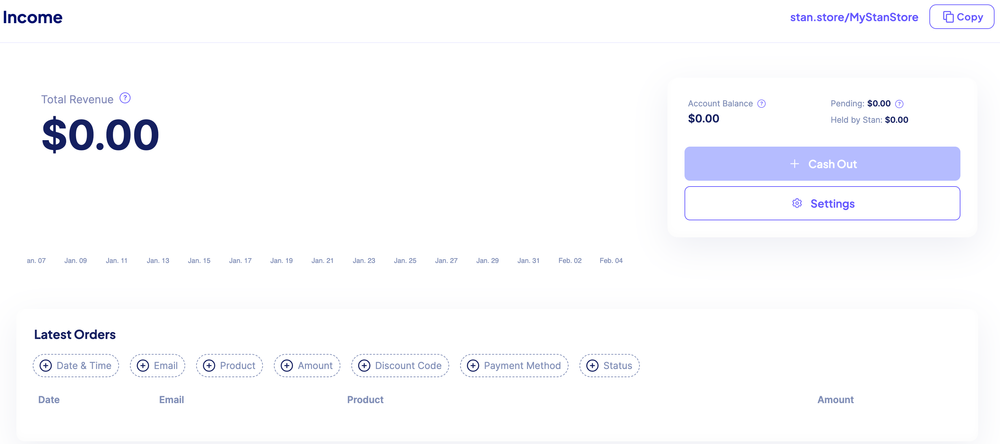
The MailChimp integration enables creators to enroll Stan Store subscribers onto their Stan Store mailing lists. The platform also offers basic mailing list features on its Creator plan, and more sophisticated features on the Pro plan.
Stan Store customer support
Users are expected to rely on the Stan Store knowledge base for most issues, and it can be difficult to figure out how to contact the support team. The 'Still need help?' option at the bottom of the knowledge base icons isn't a live link, and it can be frustrating to find the correct email address for billing or general account inquiries.
The platform does offer email support, but response times aren't guaranteed, and while most reviews of Stan Store are positive and speak highly of the level of customer service offered by the agents once you do reach them, some users who have the lower tier subscription complain that it's difficult to speak to a human customer service agent, and that response times are slow.
How much does Stan Store cost?
Stan Store is a premium service, and there's no free tier, although there is a 14-day free trial. Once the trial is up, you'll have to choose between the Creator and Creator Pro memberships.
The Creator Membership costs $29/month and offers:
- A mobile-optimized creator store
- Calendar invites and bookings
- Basic analytics
- Unlimited courses
- 1-tap checkout
- Subscriptions
- A mailing list builder
The Creator Pro tier costs $99/month, offering all of the above features as well as:
- Email flows and sales funnels
- Discount codes
- Upsell offers
- Payment plans with Afterpay and Klarna
- Affiliate payments
- More sophisticated analytics
These plans may seem costly, but the features make Stan Store a one-stop-shop for ecommerce. If you're already paying for Mailchimp, Calendly, Kajabi, and other marketing tools, you could save money by consolidating all of those services into one subscription fee with Stan Store.
What is Shopify?
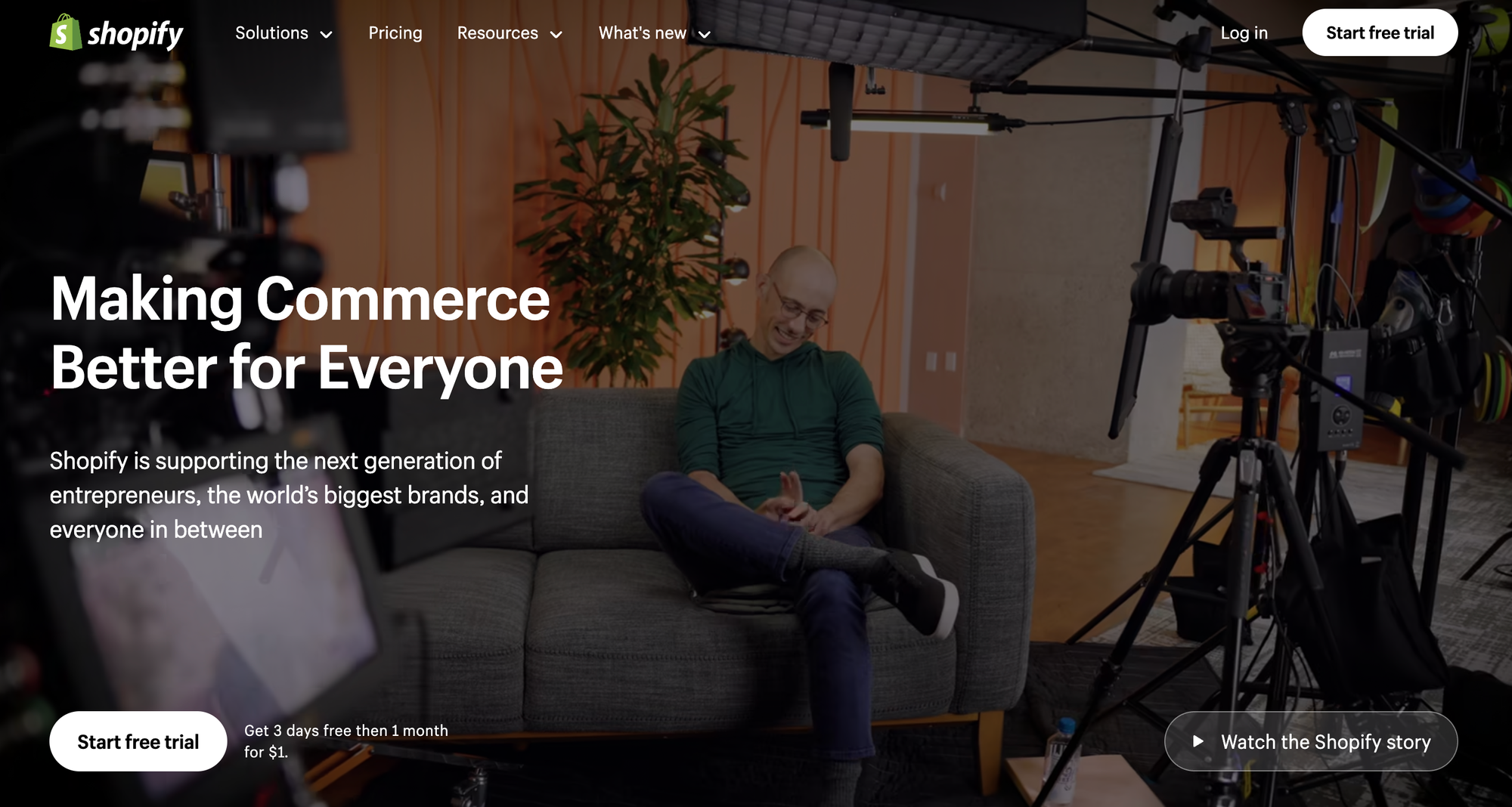
Shopify is a fully-featured ecommerce platform aimed at a slightly different audience to Stan Store. It enables entrepreneurs to run an online store, collect customer details for marketing purposes, and accept payments both online and from a bricks and mortar store.
Who can use Shopify?
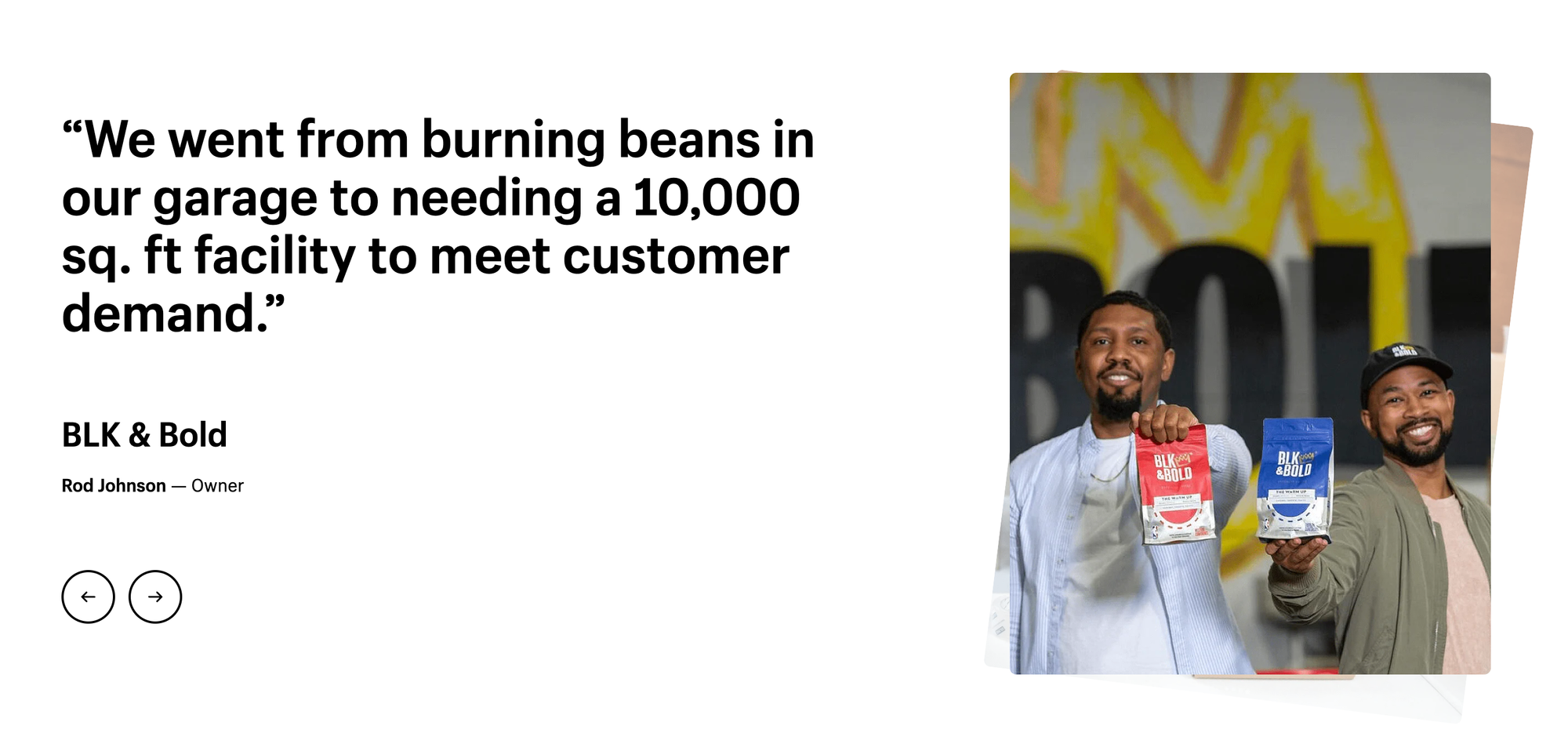
Shopify is trusted by many major brands, including Hasbro, Redbull, and The Economist. The platform is open to all, though, and has tiered pricing that makes it accessible to smaller businesses and solopreneurs too. If your goal is to build an online presence and sell physical products using a traditional storefront, Shopify could be ideal for you.
How does Shopify work?
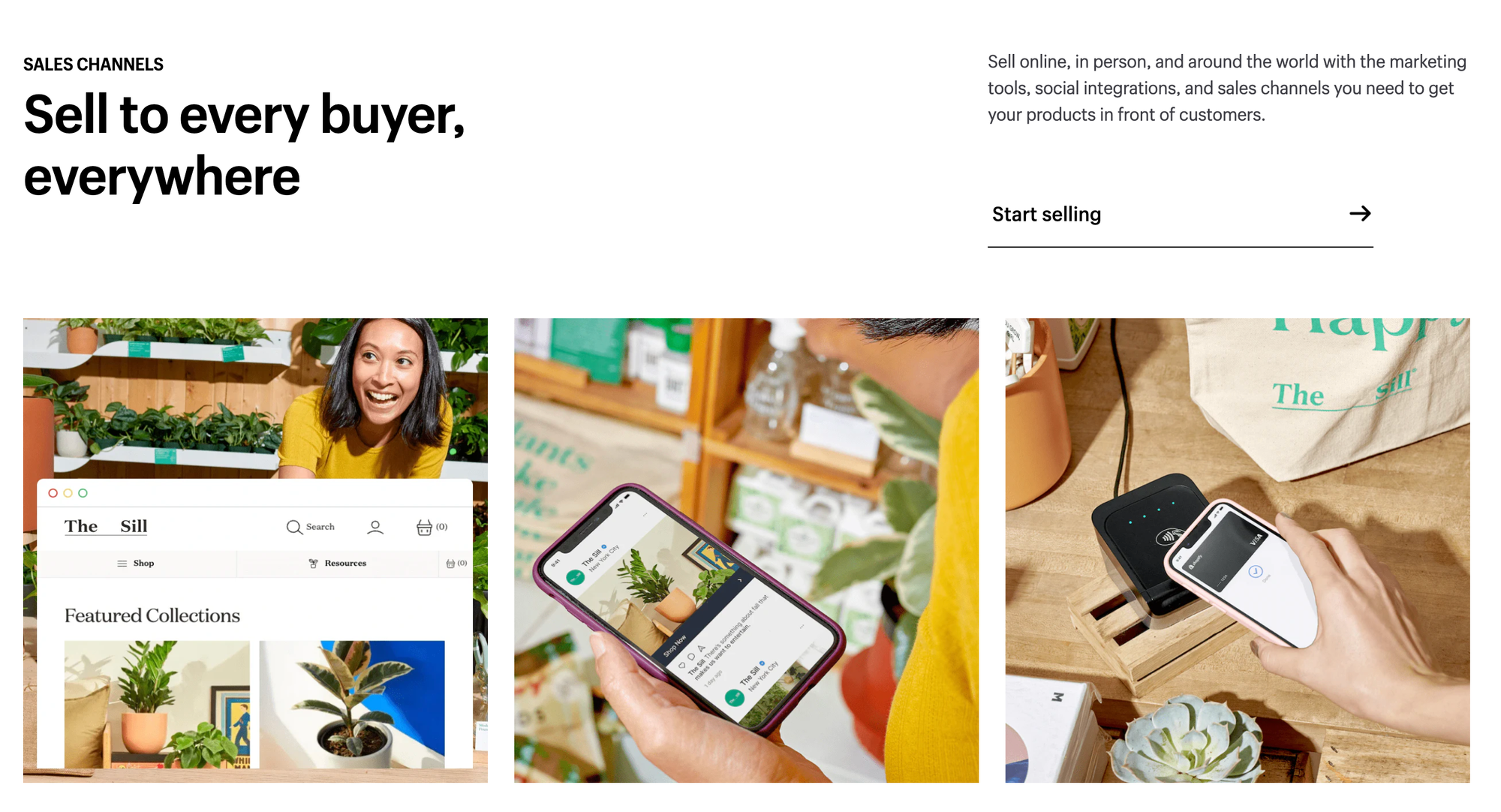
Shopify is a premium platform, but there is a 14 day free-trial and the platform offers a discount on the first month of the Basic, Shopify and Advanced plans, so you'll have some time to build your store and get some traffic before you start having to pay the full price.
The store builder tools are easy to use, so if you're happy with the basic templates you'll be able to get up and running quite quickly.
Selling with Shopify
To get started with Shopify, simply sign up for a free trial and go to the Shopify Admin page. When you sign up, your store will automatically be set up with a default theme. To change the theme to one of the other free choices:
- Navigate to Online Store > Themes
- Scroll to Free themes and choose Explore free themes
- Click on a theme to preview it, and click Add if you like that theme and would like to use it
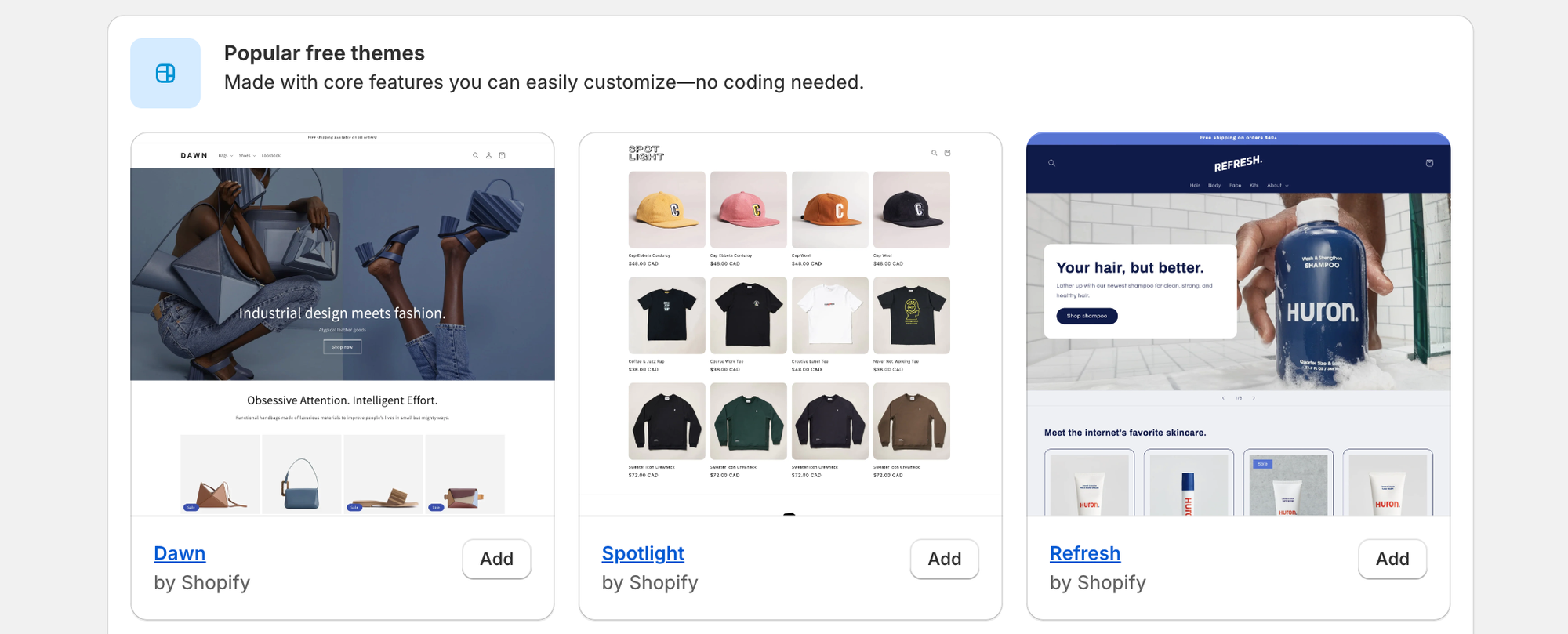
Shopify also offers a selection of premium themes available to purchase from the Theme Store.
Once you've chosen the look for your store, you can add your first product.
- Click Products to open the listing page
- Click Add product
- Enter a title for the product, along with a description and other relevant details such as the product weight or dimensions
- Add a price for the product, and any relevant shipping details
- Click Save Product
Repeat this process for any other products you would like to add.
Platform customization
The Shopify theme system uses a language called Liquid, and if you're familiar with this language you can customize the look and feel of your store quite extensively. The learning curve for Liquid is quite steep, and because it's proprietary, it can be difficult to find people who are familiar with it (compared to HTML and CSS, which platforms such as WooCommerce use).

The extensive library of free themes and the selection of premium ones in the marketplace should cover most people's needs, and the themes themselves offer some a lot of customization options (such as colors, typography, border thickness, product card style, and more) too.
Engagement tools and customer management
Shopify allows you to collect customer information for marketing purposes, and you can embed analytics tools into the platform to view traffic details. There are some good localization options on the platform to assist those who are selling in more than one territory. There is also a comprehensive analytics form to view metrics such as conversion rate, total sales, average order value, and more.
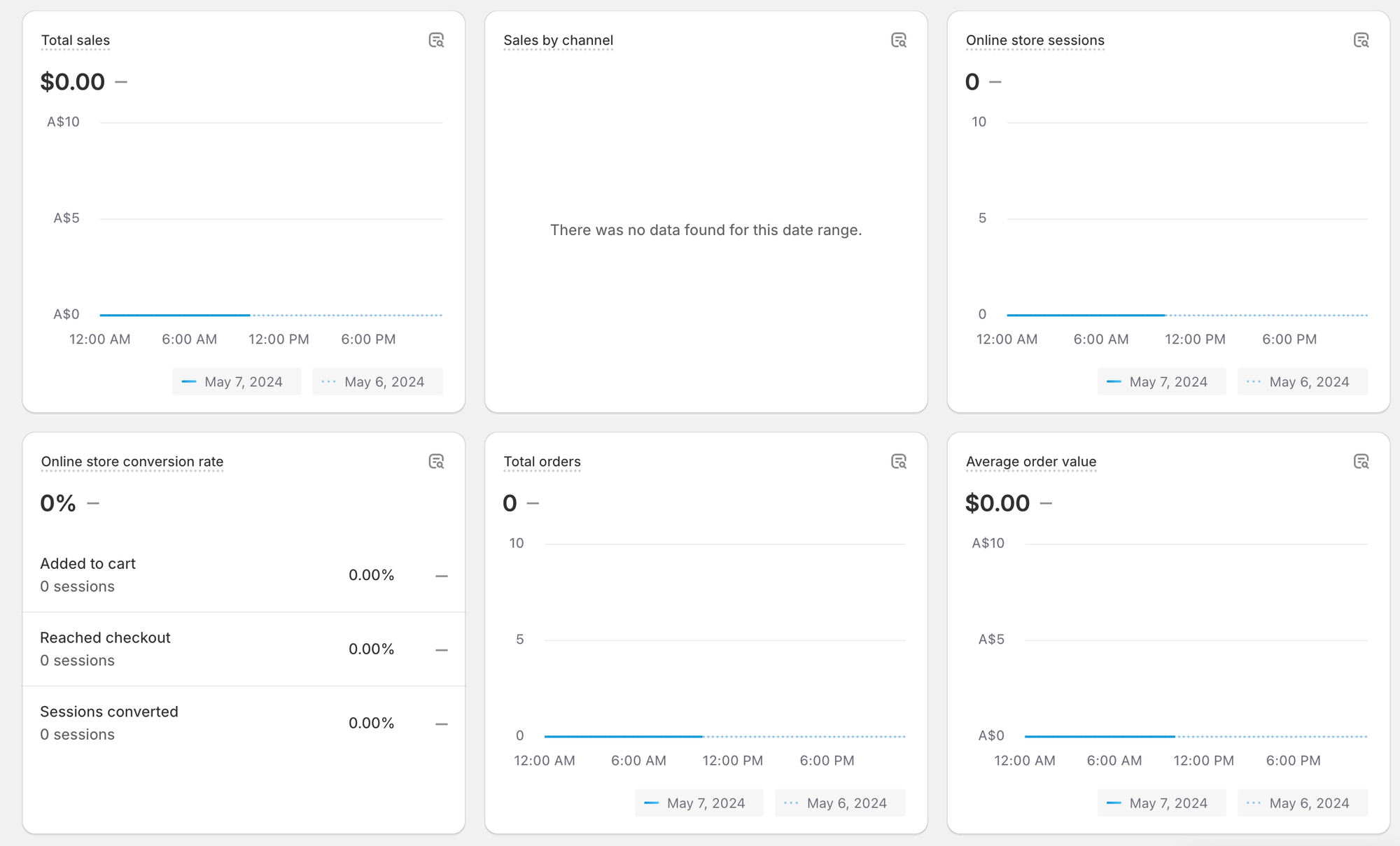
It's also possible to use add-ons to run loyalty or rewards programs, making Shopify quite a versatile platform when it comes to customer engagement.
Shopify customer support
All Shopify customers have access to 24/7 chat support, even those on the Basic tier. The website has an impressive library of how-to guides, covering both technical and general ecommerce-related concepts to help sellers make their stores a success.
How much does Shopify cost?
Shopify offers four membership tiers:
- Basic: $39 per month
- Shopify: $105 per month
- Advanced: $399 per month
- Plus: Bespoke pricing and a 3-year term
Each plan offers access to the store builder, a POS system, 24/7 support and at least 10 inventory locations. In addition to the subscription fee, sellers will also be charged a payment processing fee, which varies depending on the payment type used and the membership tier.
Stan Store vs Shopify: Which is better?
Stan Store and Shopify cater to different audiences. If you sell physical products or want a fully-fledged online store, Shopify is the most suitable option. If you're a social media influencer looking to sell a handful of digital products, Stan Store's more streamlined option would be a good choice.
Advantages of using Stan Store
- Drag-and-drop store builder
- Includes bookings, email marketing, and other features
- Sell directly from your 'link-in-bio'
- Offer a seamless experience for your social media followers
Disadvantages of using Stan Store
- No free tier
- Limited customization options
- Can't be used to create a fully-fledged store
Advantages of using Shopify
- A fully-featured ecommerce platform
- A well-known brand trusted by many major merchants
- Responsive live chat support
- Can easily be used to sell physical products
Disadvantages of using Shopify
- High fees
- Primarily designed for physical products, not digital ones
- Steep learning curve if you want to customize the store heavily
An alternative to Stan Store and Shopify: Whop
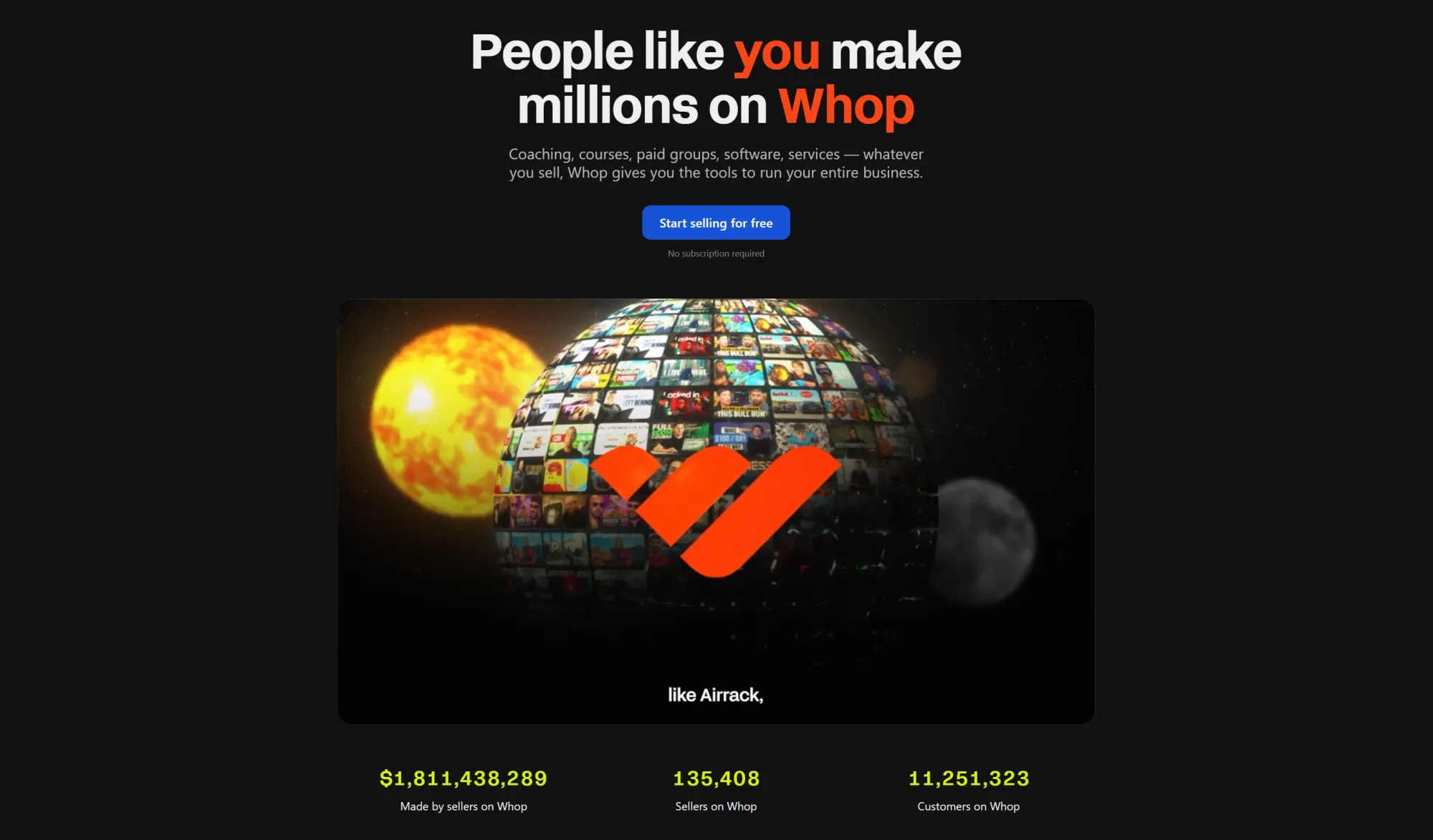
If neither Stan Store nor Shopify quite fit the bill for your ecommerce venture, why not try Whop?
Whop is a social commerce platform that enables you to sell all kinds of digital products. From calendar bookings to ebooks, online courses, videos, subscriptions, and more. Unlike Stan Store and Shopify, there's no monthly fee. You can get started selling on Whop for free, and you'll pay only a 2.7% + $0.30 commission on the products you sell.
Getting started is easy. When you start selling on Whop you'll be given the chance to create one or more Hubs, each of which serves as a space for you to share your files, apps, and other digital content. Let's imagine you're a mindfulness coach selling courses and meditation videos.
You could create hubs for different target audiences, and sell access to those hubs through your Whop store. Or, you could make just one hub, and offer different tiers of membership within this Hub, making certain pieces of content accessible to specific membership tiers.
Selling via Whop offers many benefits:
- Sell almost any form of digital content, thanks to the wide variety of app integrations available
- No monthly fees
- Low fees (2.7% + $0.30)
- A highly customizable sales platform
- No lock-in: you can export your customer database at any time
If you're a content creator who would like to monetize your customer base, why not sign up with Whop today and create your first hub? There are no up-front fees to pay. Whop only makes money once you start selling your products, so it's entirely risk-free.
Frequently asked questions
Can you customize Shopify themes?
Shopify has its own templating language called Liquid. It is possible to customize themes if you're familiar with this language. However, Shopify stores can be quite complex, and designing/altering themes is something that has a steep learning curve.
How many products can you add to a Stan Store?
There's no hard limit to the number of products you can add to a Stan Store. To maximize conversions, the platform suggests adding no more than 4-5 products. If your store page requires a lot of scrolling to see all the products, you could be missing out on sales.
Can you sell digital subscriptions on Whop?
Whop supports both one-time purchases and recurring subscriptions. If you have digital products to sell, simply create a Hub on Whop and add your online courses, software, digital downloads or other products, and start marketing them to your followers.



